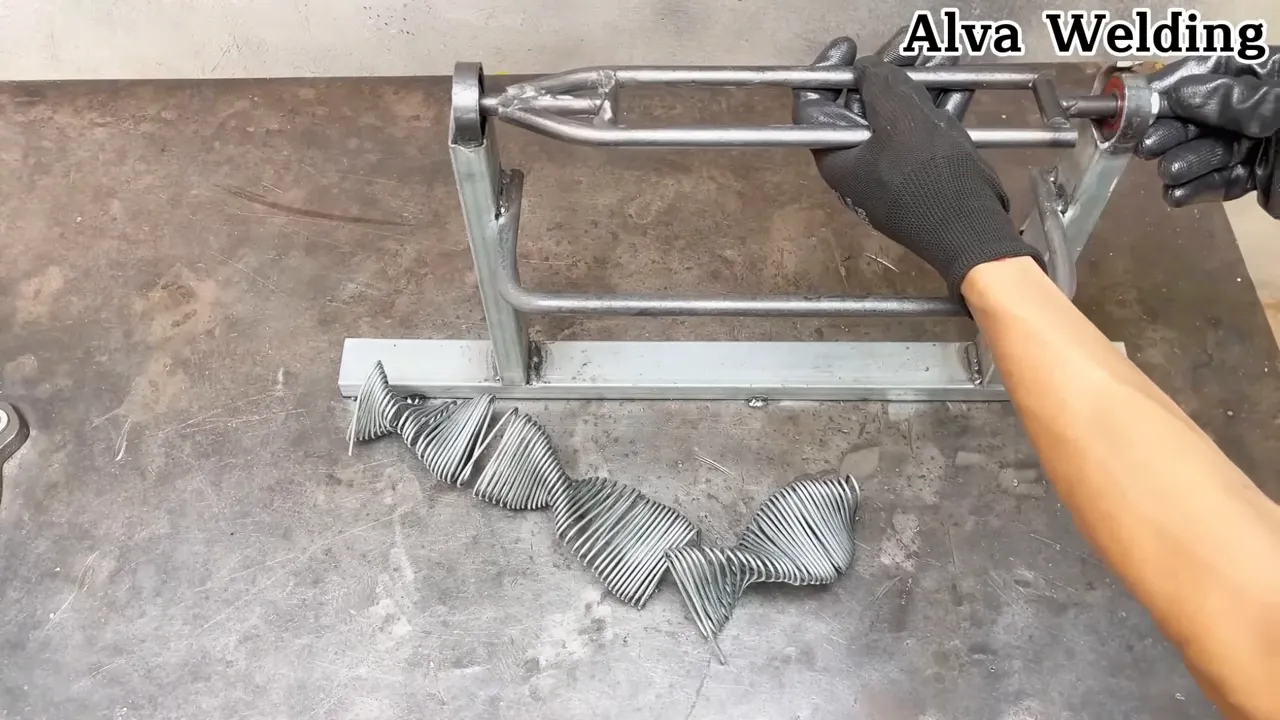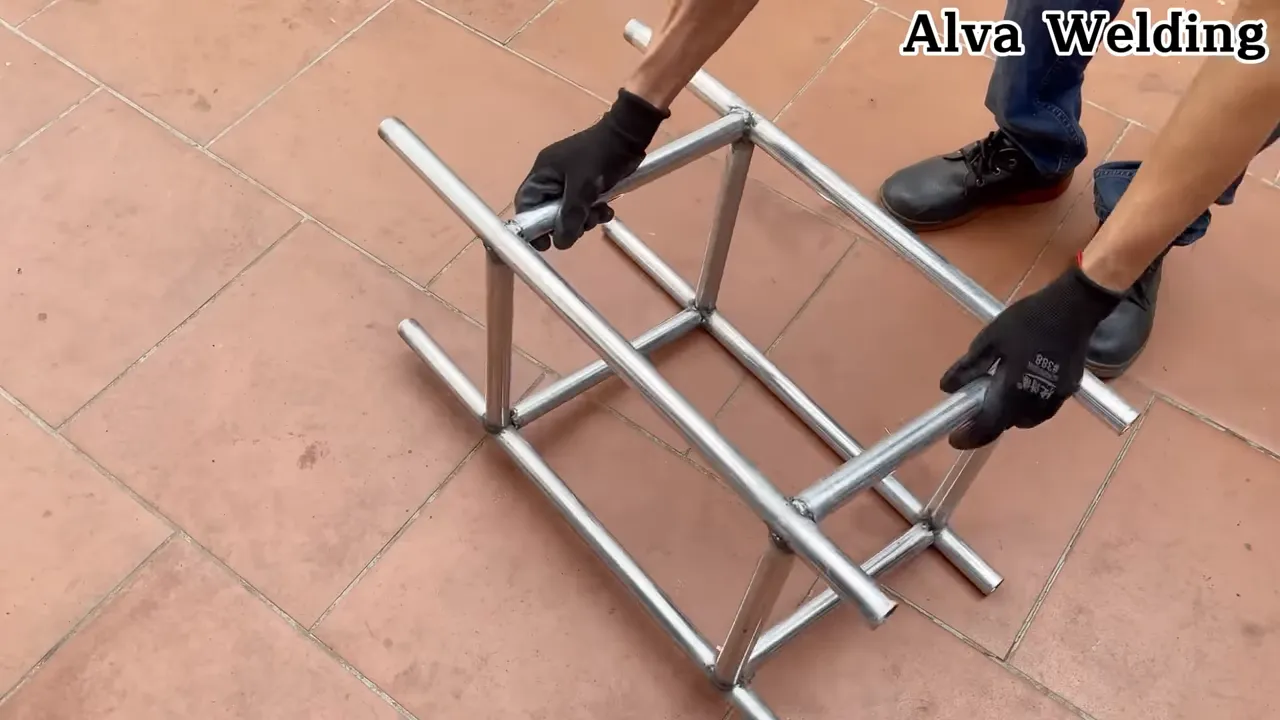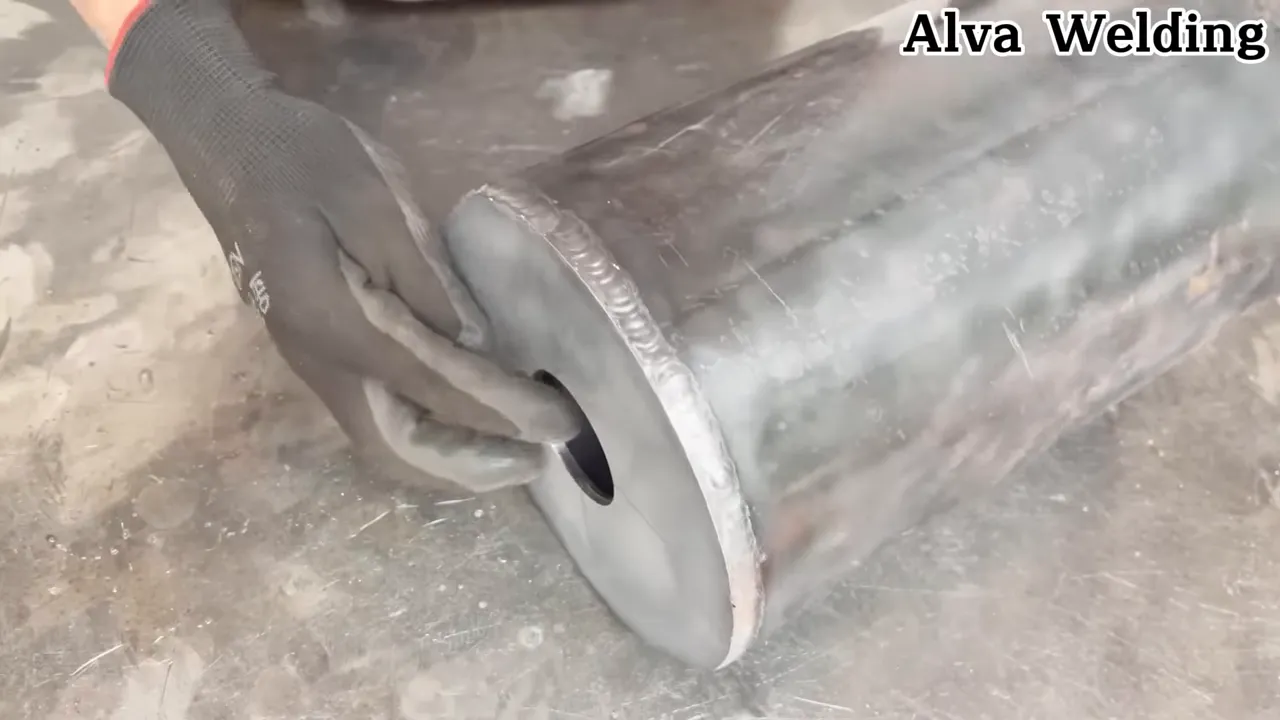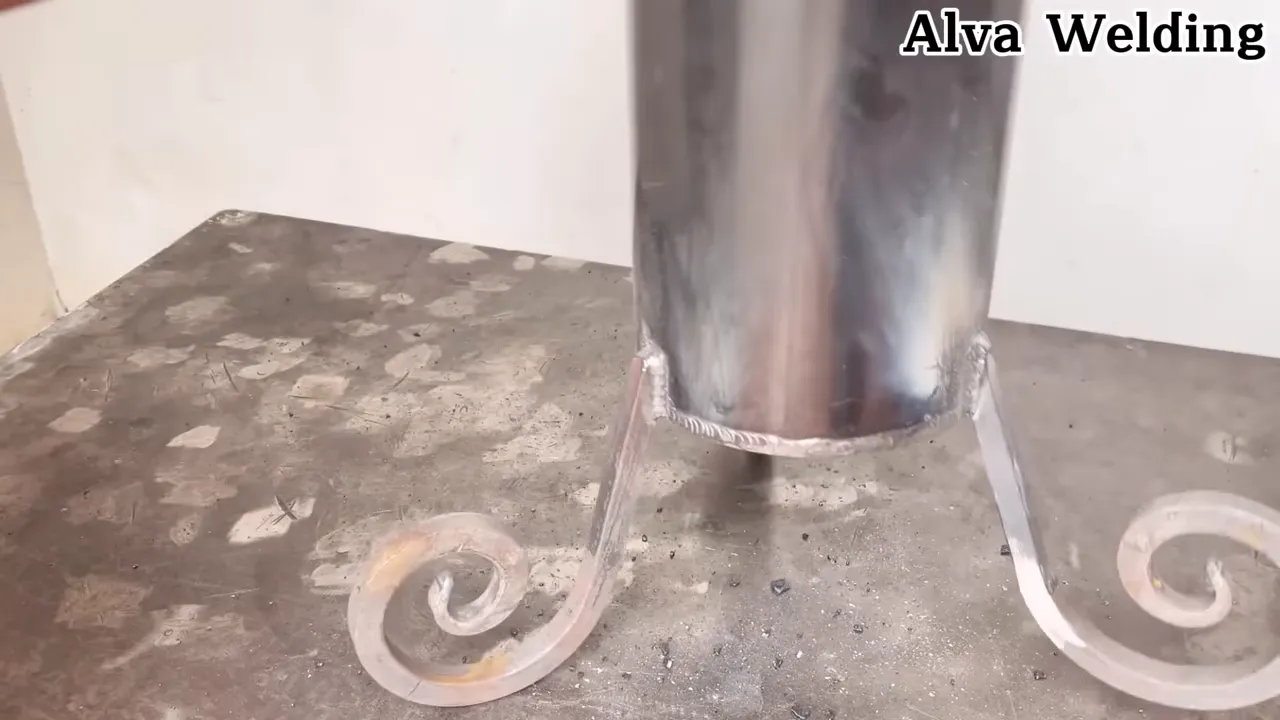I love turning small problems in the workshop into easy, reliable solutions. Over the years I have built simple jigs, fixtures, and handheld helpers that save time, make work safer, and often deliver more accurate, repeatable results than expensive store-bought tools. Today, I will take you through five practical DIY tools you can make with common materials and basic welding or metalworking skills. These are the kinds of ideas you say to yourself later Why didn’t I do this sooner?
Before we begin, you will see me shout the workshop cue “Gå!” a lot. That is my shorthand for go, start, and keep moving. A little energy in the shop helps. You will also find a playful, human side here. Sometimes I stop to make a snack or joke, like saying “I’m going to make a hot dog” or “I’m going to make a sandwich”, and I repeat simple ingredient notes like 1 Tbsp of butter or 1 Tbsp vanilla. These small moments remind us that good projects should be practical and enjoyable. Work hard and enjoy the process.
🔧 Tool 1 – Quick-Change Clamp Bar
When you need to clamp odd-shaped parts or change clamping points frequently, a quick-change clamp bar is a game changer. The idea is simple. Build a flat steel bar with a series of slots and a movable clamp head that can slide and lock in place instantly. This replaces fumbling for different sizes of clamps and makes repetitive work much faster.
The moment I call “Gå!” is the start of the build process. That instinct to begin is important. Set your workspace and gather materials before you weld or cut.
Why this tool matters
Standard clamps come in fixed ranges and can be slow to reposition. A quick-change clamp bar gives you infinitely variable clamping positions along the length of the bar. You can adapt it to hold plates for tacking, hold pipe sections in alignment, or support jigs that require quick repeat setups. It is especially useful when you need both speed and repeatable positioning.
Materials
- 1 piece of mild steel flat bar 25 mm by 6 mm, length as needed (300 mm to 600 mm works well)
- 1 small T-bolt or carriage bolt with matching nut
- 1 short piece of square tube or angle iron to act as the clamp head
- A small piece of rubber, leather, or scrap to protect workpieces
- Basic fasteners and a bit of welding filler rod
Step-by-step build
- Mark and cut the flat bar to the desired length. File the edges to remove burrs. You want a smooth stock to avoid snagging on the workpiece.
- Lay out a series of slots along the bar. The slots should be slightly longer than the bolt head you plan to use so the T-bolt or carriage bolt can slide. Punch or drill a starter hole and grind to shape, or cut slots using a narrow cutting wheel.
- Prepare the clamp head from the square tube or angle iron. This piece will slide along the bar and sit over the workpiece. Weld a small nut or plate under the clamp head where the bolt will thread into. Alternatively, weld a small captive socket to accept the bolt.
- Test the sliding action. The head should move freely when the bolt is loosened but not wobble excessively. Add a small washer or bushing if movement is rough. When tightened, the head must lock securely without flex.
- Protect the clamp face with rubber or leather to avoid marring. For extra grip on round stock, cut a small groove in the rubber or use a thin piece of carpet scrap.
- Finish by deburring all edges and giving the entire tool a quick coat of paint or clear oil to slow rusting.
Practical tips from the shop
- Keep the slot spacing consistent. A 15 mm pitch gives fine adjustment without crowding.
- Use a low profile T-bolt so the clamp head sits close to the work; tall bolt heads can interfere with nearby parts.
- If you are welding thin metal, clamp the bar while tacking to avoid heat distortion.
When I test clamp setups I like to shout a quick “Gå!” and see how fast I can change positions. That small ritual is a mental cue to work quickly, then check thoughtfully.

🛠️ Tool 2 – Angle Stop and Corner Fixture
Welding perfect 90 degree corners over and over is challenging without a reliable fixture. The angle stop and corner fixture is a compact, heavy base with adjustable stops to hold pipe, plate, or channel at consistent angles. You can use magnets for simple light jobs, but this fixture provides heavy, repeatable clamping and alignment for tacking and final welds.

What it solves
In production or even single-piece fabrication, the time spent aligning parts can easily double your project time. This fixture reduces layout time and ensures welded assemblies fit together consistently. That reliability is the difference between rework and a clean finish.
Materials
- Flat base plate 150 mm x 150 mm of 6 to 10 mm thickness
- Two adjustable stop bars made from 20 mm square bar
- Thumb bolts with T-nuts or captive weld nuts
- Optional magnetic bases for light parts
How to build it
- Cut and flat-grind the base plate. A heavy base helps absorb heat during welding and prevents movement. It does not have to be perfectly flat but aim for minimal warp.
- Weld or bolt two sliding channels to the base. These channels accept the stop bars and allow you to set the corner width. A slot and bolt system works well. This is the heart of the adjustable feature.
- Make stop bars from square stock and drill holes for the thumb bolts. The ends of the stops should be slightly rounded to seat pipe and protect corners of plate.
- Test the stops at 90 degrees. For added flexibility, add a detent or index hole set that locks at common widths such as 25 mm, 50 mm, and 75 mm.
Use cases and workflow
Set the stops to the part dimension, run a tack at one or two points, check fit, then perform the final weld. With the fixture you can assemble multiple parts in sequence, freeing you to focus on weld quality. When I teach beginners I often set the fixture and then say “Gå!” to encourage them to move to the next step after verifying alignment.
🧰 Tool 3 – Reversible Edge Guide and Scraper
A lot of jobs need a consistent offset from an edge. Whether you are filing, cutting, or scribing, a reversible edge guide is an adaptable tool that mounts to a bench or clamps to a piece and gives you a repeatable reference. The same body can hold a scraper blade, scribe, or a wire brush for different tasks.
Why this design works
Instead of buying many different guides and scribes, one reversible device with interchangeable heads will handle multiple tasks. The guide is simple: a flat plate with a dovetail or slot that accepts removable heads. Flip the head for a different action or reverse to change the offset. This flexibility saves bench space and cost.
Materials and heads
- Base plate 120 mm x 40 mm mild steel, 5 mm thick
- Two removable heads: a scraper head made from 2 mm spring steel, and a scribe head made from hardened tool steel
- A small locking bolt or cam clamp to secure the head
Construction notes
- Cut a slot in the base plate sized to the head thickness. A dovetail is overkill for many uses. A simple rectangular pocket will do if the locking bolt prevents lateral movement.
- Make heads slightly proud so they can be replaced without disassembling the guide from the bench or clamp.
- Harden the scribe head if you plan to mark hardened materials. The scraper head should be flexible enough to be sharpened easily.
- Round off any corners to prevent snagging on fabric or cloth when used as a brush guide.
When you need to work fast, set the offset and shout “Gå!” to start a timed assembly step. That cadence helps keep transitions smooth and efficient.

⚙️ Tool 4 – Magnetic Welding Angle Setter
Magnetic holders are common, but often they do not give the fine control required for thin gauge or precision assemblies. The magnetic welding angle setter boosts a strong magnet with a small pivot and locking mechanism so you can set angles between 45 and 90 degrees with a secure hold. It is ideal for tacking thin materials without distortion.
Core idea
Add a pivot joint and a scale to a magnetic base so you can set an exact angle and then lock it in place. This is a hybrid of a protractor and a magnetic holder. It is compact and easy to carry, and it clamps to many shapes, often without needing additional heat protection for the magnet because you will often tack away from the magnet or use a heat shield.
Parts and assembly
- Small rectangular magnet block 30 mm x 20 mm x 10 mm
- Thin pivot pin and a small index plate with engraved angle marks
- Locking screw or cam clamp
- Thin copper or steel heat shield to protect the magnet while welding
How to use it
- Bring the magnet to the part and set the pivot to the desired angle. The pivot gives you the fine control that plain magnets lack.
- Lock the angle. Place a small heat shield between the magnet and the weld zone if you will be welding very close to the magnet.
- Tack in place, check alignment, then finish the weld while periodically allowing the magnet area to cool between tacks if needed.
During quick jobs I count out loud while tacking. A simple “Gå!” before the tack is my signal to commit to a single motion. That keeps tacks clean and reduces rework.
🪛 Tool 5 – Portable Depth Block and Drill Guide
Accurate drilling at a specific depth and angle is more common than people think. Whether you need to drill alignment holes for pins or create repeatable distance from an edge, the portable depth block and drill guide is a small, handheld jig that attaches to a drill and stops the bit at a precise depth. The guide can also be used as a simple right-angle guide for handheld drills when a drill press is not available.
Why you need it
Using a handheld drill without a guide is acceptable for rough holes, but for precision fit and alignment, depth and angle control are essential. This block is fast to make, durable, and portable. It is particularly useful when working in the field or on assembled structures where you cannot use a drill press.
Materials
- 1 block of hardwood or aluminum 60 mm x 50 mm x 30 mm
- 1 bushing or sleeve sized for the drill bit you use most often
- 1 threaded stop collar or a simple set screw depth stop
- Small clamps or magnets to temporarily hold the guide to a metal surface
Build instructions
- Drill a guide bushing hole through the block that matches the diameter of your bushing. Press or glue the bushing into the block so the drill bit runs true.
- Drill and tap a threaded hole to accept a set screw that acts as a depth stop. When you screw the set screw in it will contact the drill chuck or a spacer sleeve and limit depth.
- Chamfer the entry and exit of the guide hole to help center the bit when starting the hole.
- Add a small magnetic base or a pair of clamp lugs so the guide can be attached quickly to a metal surface without additional clamps.
This is one of those jigs you make once and use for years. I often pair it with the quick-change clamp bar and shout “Gå!” as a reminder to set the depth stop, then drill in one measured pass. That habit reduces walking the bit and creates cleaner, straighter holes.

🧯 Safety, Finishing, and Small Shop Habits
Good tools are only as safe and effective as the habits around them. Before you light up the welding arc or bring a drill to life, take a moment to set up safe practices and finishing steps that extend the life of your jigs and protect you from accidental damage.
Basic safety checklist
- Wear eye protection and a welding helmet for arc work. Use hearing protection when grinding or cutting.
- Keep clamps and fixturing stable and never rely on magnetism alone for heavy or high-force operations without backup clamping.
- Protect magnets and heat-sensitive parts with copper or steel shields when welding nearby.
- Use proper gloves and avoid loose clothing. Tie back long hair. Simple personal habits prevent many injuries.
Finishing touches for longevity
Once a fixture is built, take a few minutes to finish it properly. Deburr all edges, add a light oil or paint, and install rubber or leather faces where the tool meets finished work. A well-finished jig will not mar your projects and will last longer.
When I finish a small jig I sometimes write a quick note on the bench. Yesterday I wrote ingredients like 1 Tbsp of butter and 1 Tbsp vanilla as a reminder to be measured and take small pleasures. Those little rituals keep the day balanced.

📋 Checklist Before You Start
Before you begin fabricating any of these tools, run through a quick checklist. This will save time and improve the outcome.
- Material check – ensure you have the correct steel, fasteners, and protective materials.
- Tool check – grinder wheels, welding tips, and drill bits are ready and sharp.
- Workspace check – clear space, ventilation, and a fire extinguisher handy.
- Mock-up – clamp parts dry and check fit before tacking or welding.
- Pause and commit – say “Gå!” to yourself and proceed deliberately.
🧩 Ideas for Modifications and Variations
Every shop is different. Use the five tools as starting points and adapt them to your material, budget, and the volume of work you do. Below are practical variations that have proven useful in my shop.
- Clamp bar with quick-release foot. Replace the bolt with a lever clamp for faster changes when precision is slightly less critical.
- Corner fixture with removable chamfer blocks. Add replaceable blocks to adapt the fixture to different corner radii.
- Edge guide with integrated vacuum or dust channel if you cut a lot of sheet metal and want cleaner edges.
- Magnetic angle setter with a digital protractor module. Use a small battery-powered angle sensor when you need precise, repeatable angles beyond detents.
- Drill guide with interchangeable bushings. Keep a set of bushings for common bit sizes and a quick press fit for fast swaps.

🧪 Troubleshooting Common Problems
Even the best-made jig can have quirks. Here are common problems and how to fix them quickly.
Clamp bar binding when sliding
If the clamp head binds, check for distortion from welding. Heat control is critical. Correct by peening lightly and regrinding a seating face. Adding a thin shim can often restore free motion.
Corner fixture not holding square
Check the base for warp. A heavy base plate prevents heat-induced skew. If the stops are slipping, add a small wedge or index pin to lock positions mechanically rather than relying only on friction bolts.
Edge guide gives inconsistent offset
Wear on the reference face or debris under the guide will cause problems. Clean and regrind the reference face. If offset still wanders, use a small steel ball detent or index pin at the most common reference positions.
Magnet losing holding force near welds
Magnet overheating will reduce holding force permanently. Use a copper heat shield, and place tack welds first where the magnet is not directly under the weld. If the magnet has been damaged, replace it. Keep spare magnets on the bench because they are cheap insurance.
Drill guide walking or drilling off-center
Check the bushing for wear and the set screw alignment. A slightly oversized bushing or a bit with a burr will walk. Recondition the bushing or replace it. Chamfer the entry hole to help indexing on punch marks.
🧾 Project Examples Using These Tools
Nothing clarifies a tool more than using it for real projects. Here are three short examples that combine the tools above into actual, practical fabrication tasks.
Example 1 – Simple Table Frame
Use the quick-change clamp bar to hold legs in place on the table apron, use the corner fixture to align corner joints accurately, and use the magnetic angle setter to ensure that braces sit at the proper angle. The portable drill guide handles bolt hole alignment for attaching the top. The result is a square, repeatable table that is easy to assemble and disassemble for transport.
Example 2 – Gate Hinge Assembly
When fabricating a gate hinge, the reversible edge guide allows you to scribe a consistent offset for hinge plates. The magnetic welding angle setter ensures the hinge mounting plate is true while you tack it to the post. Drill guide makes sure through bolt holes are concentric and at the same depth on each side for applying through-bolts. These small tools make a long lasting gate that does not sag.
Example 3 – Custom Exhaust Hanger
For a custom exhaust hanger, use the clamp bar to hold the pipe while you tack new hangers, the corner fixture to create repeatable mounting ears, and edge guide to create uniform slots. The magnetic setter helps with small angle changes required to fit complex geometry. A reliable hanger means less vibration and noise down the road.

❓FAQ
What materials do I need to start building these DIY tools?
You need common mild steel stock such as flat bar, angle, and square tubing; basic hardware like bolts, nuts, T-bolts, and set screws; and small accessories like rubber or leather for protective faces. A basic welder, grinder, drill and basic hand tools complete the toolkit. Exact sizes depend on the specific tool you are building, but all designs are meant to be adaptable to what you already have.
Can these tools be made without a welder?
Yes. Many of the ideas can be adapted using mechanical fasteners instead of welded joints. For example, the clamp bar can be made with bolted sliding stops. The corner fixture can use bolted channels. Welding gives compactness and stiffness, but thoughtful bolting and design will still yield very effective jigs.
How do I keep magnets safe while welding?
Use a heat shield made from copper or thick steel between the magnet and the weld. Do not place the magnet directly in the hottest zone. Tack away from the magnet and allow it to cool between tacks if needed. If a magnet is exposed to excessive heat it can lose holding force permanently, so use caution and protect valuable magnets.
What is the quickest tool to build that gives the most benefit?
The quick-change clamp bar is the fastest and most immediately useful. It takes a short time to make and can dramatically speed up assembly, clamping, and alignment tasks across many jobs. It is flexible, simple to use, and adapts to many situations quickly.
How do I stop a drill guide from walking when starting a hole?
Punch a pilot dimple or center-punch the start point to give the drill point a guided entry. Use a chamfered guide hole to help index the bit. Ensure the bushing is tight and free of burrs. If necessary, use a small starter bit to create a pilot hole before switching to the full-size bit.
Are there any finishing recommendations to prevent rust on these jigs?
Yes. Clean and degrease the finished tool. Apply a rust-preventive coating like light machine oil, wax, or a spray paint. For a more permanent finish, powder coating works well but is overkill for many small shop jigs. Keep protective pads on faces where you contact finished parts to prevent scratching and reduce corrosion from contact.
How do I scale these designs for larger production needs?
Use heavier base plates and thicker material, add mechanical indexing such as pins and detents for repeatability, and consider quick-release mechanisms for faster cycling. Replace hand-operated bolts with cam clamps or pneumatic clamps in higher volume settings. Build modular tooling that can be swapped in and out on a larger bed or bench.
Can beginners make these safely?
Yes. Start with the simpler designs, such as the clamp bar or drill guide, and practice basic cutting, drilling and tack welding. Keep initial projects small and work with scrap stock to learn how heat and welding distort parts. Use safety gear and work slowly. As skills improve, move to more complex fixtures.
🏁 Final Thoughts and Closing Notes
These five tools are intentionally simple, practical, and adaptable. They are the kind of shop improvements that transform small frustrations into smooth workflows. A clamp that adapts instantly, a corner fixture that eliminates guesswork, an edge guide that is multi-purpose, a magnetic angle setter with fine control, and a portable drill guide all add significant capability without a big investment.
Make these jigs, use them, and refine them to suit your projects. Keep your work fun. Sometimes I will stop and say “Help!” when a jig needs a quick adjustment or I want an extra set of hands, and sometimes I will make a quick snack, “I’m going to make a hot dog” or “I’m going to make a sandwich”, and measure out 1 Tbsp of butter or 1 Tbsp vanilla with a smile. Those moments remind us that the shop is also a place for small human rituals and enjoyment.
Keep the bench tidy, protect your magnets, use proper personal protection, and be deliberate. When you are ready, set up your materials, say “Gå!” and enjoy building better tools for better work. Thanks for following along. Happy fabricating.



